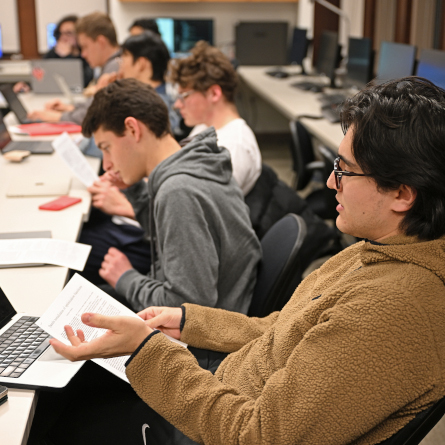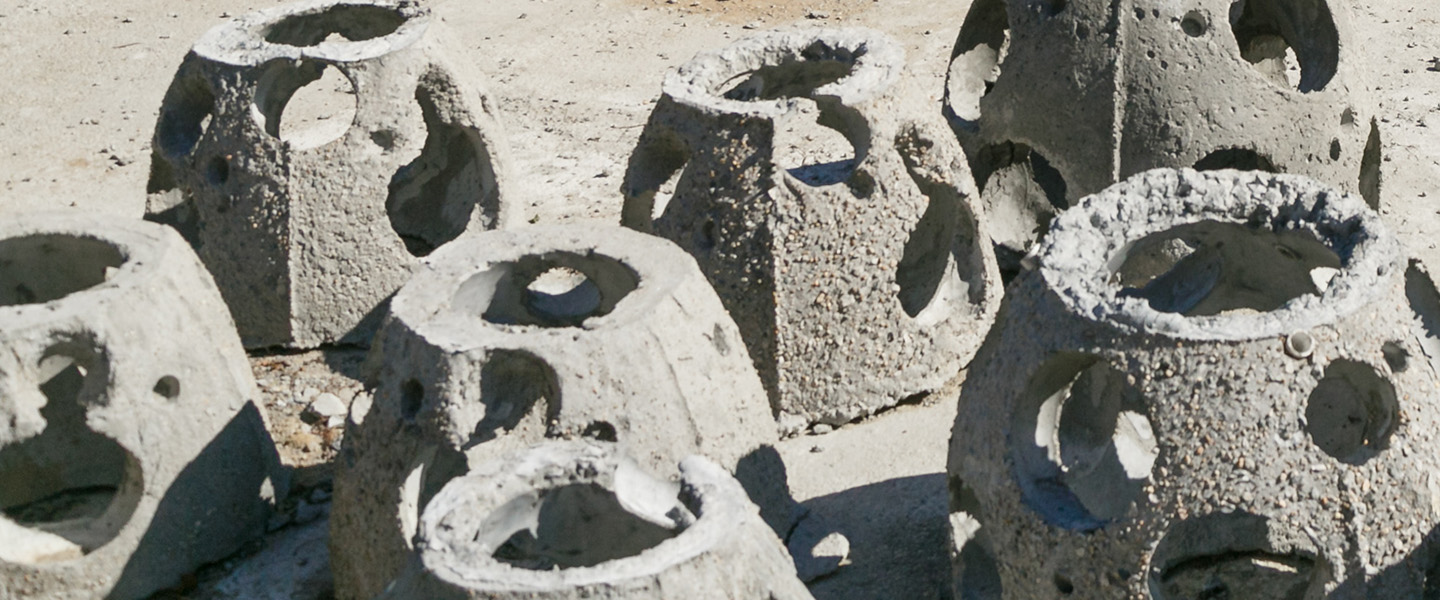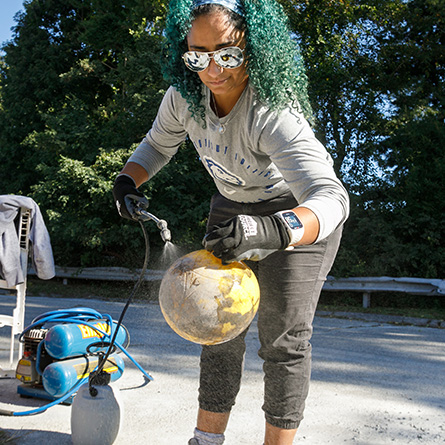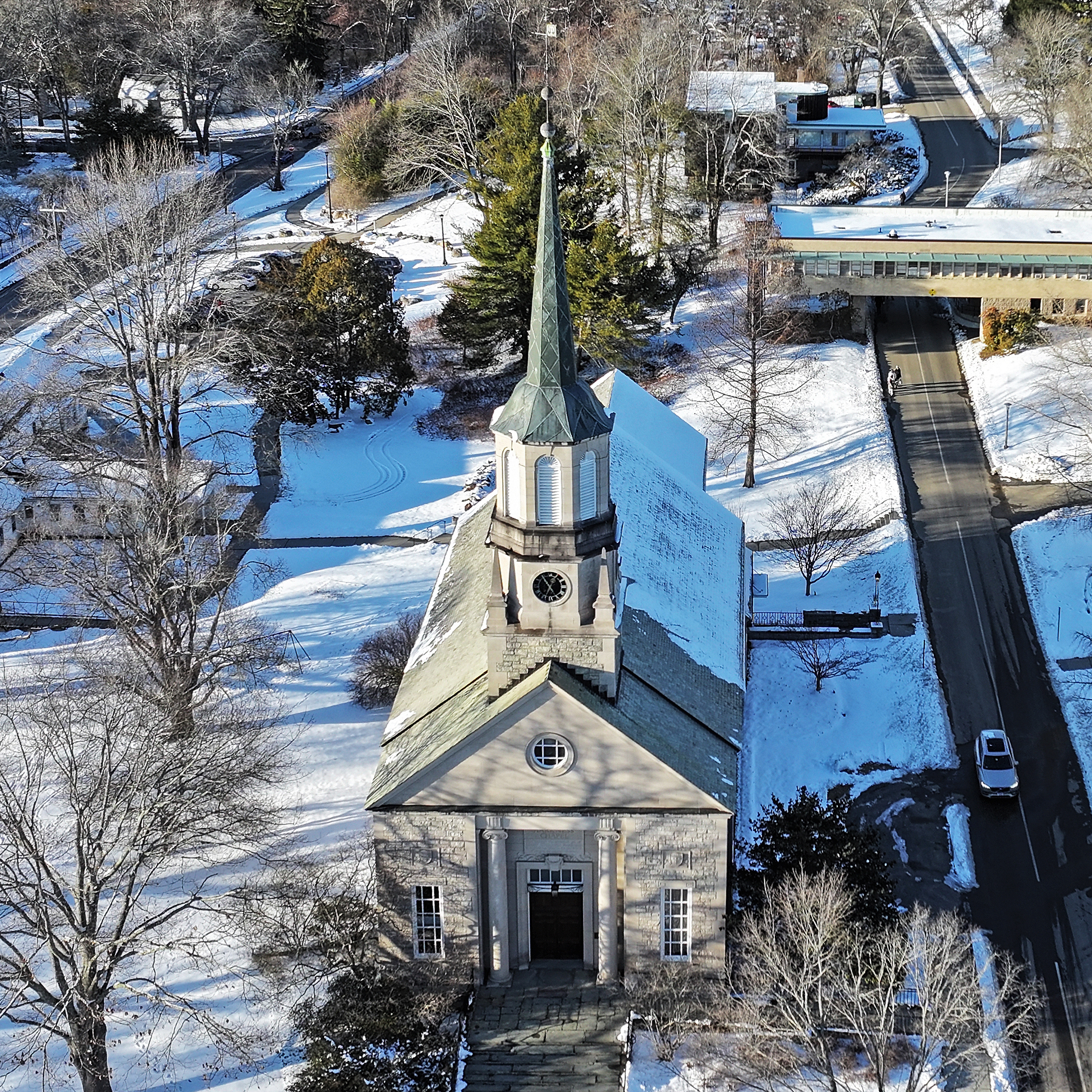
Concrete Reef
Creating a sustainable aquatic habitat along Conn's riverfront
It’s early on a crisp Friday morning in October, and Biology Professor Maria Rosa is hauling bags of concrete across a parking lot behind Conn’s Dayton Arena ice rink. She also has sand and a pump sprayer filled with sugar water—essential supplies for saving aquatic ecosystems, it turns out.
Here, just above the banks of the Thames River, Rosa is leading a team of students and volunteers in effort to build reef balls, hemispheric concrete artificial reefs that, once installed, will turn Conn’s riverfront into a sustainable aquatic habitat and living laboratory.
Rosa, the George & Carol Milne Assistant Professor of Biology at Conn, specializes in marine biology and ecology and has seen reef balls used in various ocean settings to restore natural ecosystems and protect vulnerable shorelines. But after joining Conn’s faculty in 2018, she quickly realized they could work here, too.
“Reef balls are extremely common in Florida and certain regions of the Caribbean, but our riverfront is also perfectly suited to benefit greatly from this type of artificial reef,” Rosa said.
“This living shoreline has the potential to be an incredible resource for student and faculty research.”
In addition to serving as a habitat for local fish, crabs and other marine life, the reef balls will help rebuild the shoreline by minimizing erosion and promoting the growth of plants. They will also create a protective barrier in the water that minimizes wave action and protects an existing retaining wall and Conn’s rowing and sailing docks.
“In the two years I’ve been monitoring the waterfront, we’ve lost about a half foot of beach at high tide. It doesn’t sound like much, but it means that the water line is hitting the retaining wall, and in the next couple of years it is likely to fail,” she said.
“Like living reefs, reef balls create a buffer to wave activity, including boat wake action, which can cause millions of dollars in damage to docks and boats in the water.”

The technology, pioneered by the founders of the nonprofit Reef Ball Foundation, is relatively simple. A marine-friendly, pH-balanced microsilica concrete is poured into a fiberglass mold outfitted with inflatable buoys and tetherballs to create a hollowed center and voids for water and marine life to pass through. Sand is used to create a natural floor, and sugar water is sprayed on the mold, buoys and balls to give the concrete a rough texture ideal for barnacles.
The process can be completed anywhere—including a mostly empty parking lot on Conn’s campus—and depending on the size of the mold, the resulting reef balls can vary from 1-8 ft in diameter and weigh anywhere between 30 and 8,000 lbs. Once placed in the water, the reef balls mimic natural reefs in nearly any way. The design also ensures that even in rough seas, the balls will remain in place or be pushed down into the sentiment, rather than float away.
To pilot the project at Conn, Rosa secured a $10,000 donation from country superstar Kenny Chesney’s No Shoes Reefs, a grassroots initiative, and their partner the Reef Ball Foundation, which has placed over 700,000 reef balls in over 70 countries since its founding in 1997.
She is now working with Jason Krumholz, the scientific coordinator for the Reef Ball Foundation, and her team of students to build approximately 30 reef balls, which will be placed in the river once Rosa’s state and federal permit applications are approved.
“It’s a great hands-on learning experience for the students, and they feel a real ownership of the project,” Rosa said, adding that many of the students have written their names in the concrete.
The project is also attracting local interest from community and corporate partners. Some of Conn’s reef balls were recently on display at the grand opening event for a MarineMax retailer in Westbrook, for example, and representatives from the company, the world’s largest recreational boat and yacht retailer, recently joined Rosa, Krumholz and Kayla Austin ’22 on campus for a hands-on lesson on reef ball assembly.
Austin, a biology major and environmental studies minor, said the reef ball project aligns perfectly with her plans to pursue a graduate degree in marine conservation biology and to study coral reef ecology and invertebrate biology. She traveled with Rosa over the summer to the British Virgin Islands to conduct research on coral reef and mangrove restoration, and has worked on various observational analysis projects at the College’s waterfront.
“I'm most looking forward to surveying the progress of the artificial reef in the months after it is first installed and documenting the transition of the waterfront back to a healthy and productive ecosystem,” she said.
Rosa says the data she and her students collect will help other scientists and conservationists understand how reef balls might best be used in other New England waterways.
“These reef balls will serve as a living classroom, and they will provide a site for snorkeling and diving and other independent investigations for years to come.”


